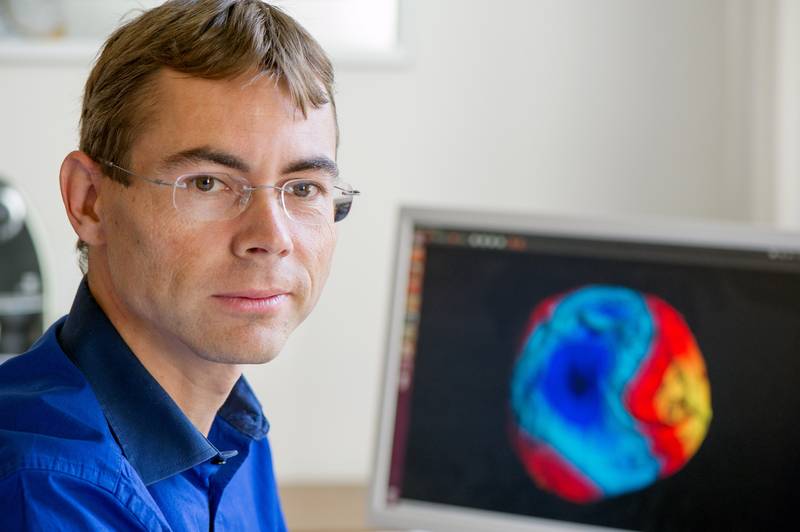ACADEMIA
TUM produces rich harvest of research on gravity

ESA workshop showcases wide-ranging results from satellite mission
Just four months after the final data package from the GOCE satellite mission was delivered, researchers are laying out a rich harvest of scientific results, with the promise of more to come. A mission of the European Space Agency (ESA), the Gravity Field and Steady-State Ocean Circulation Explorer (GOCE) provided the most accurate measurements yet of Earth's gravitational field. The GOCE Gravity Consortium, coordinated by the Technische Universität München (TUM), produced all of the mission's data products including the fifth and final GOCE gravity model. On this basis, studies in geophysics, geology, ocean circulation, climate change, and civil engineering are sharpening the picture of our dynamic planet - as can be seen in the program of the 5th International GOCE User Workshop, taking place Nov. 25-28 in Paris.
The GOCE satellite made 27,000 orbits between its launch in March 2009 and re-entry in November 2013, measuring tiny variations in the gravitational field that correspond to uneven distributions of mass in Earth's oceans, continents, and deep interior. Some 800 million observations went into the computation of the final model, which is composed of more than 75,000 parameters representing the global gravitational field with a spatial resolution of around 70 kilometers. The precision of the model improved over time, as each release incorporated more data. Centimeter accuracy has now been achieved for variations of the geoid - a gravity-derived figure of Earth's surface that serves as a global reference for sea level and heights - in a model based solely on GOCE data.
The fifth and last data release benefited from two special phases of observation. After its first three years of operation, the satellite's orbit was lowered from 255 to 225 kilometers, increasing the sensitivity of gravity measurements to reveal even more detailed structures of the gravity field. And through most of the satellite's final plunge through the atmosphere, some instruments continued to report measurements that have sparked intense interest far beyond the "gravity community" - for example, among researchers concerned with aerospace engineering, atmospheric sciences, and space debris.
Moving on: new science, future missions
Through the lens of Earth's gravitational field, scientists can image our planet in a way that is complementary to approaches that rely on light, magnetism, or seismic waves. They can determine the speed of ocean currents from space, monitor rising sea level and melting ice sheets, uncover hidden features of continental geology, even peer into the convection machine that drives plate tectonics. Topics like these dominate the more than 100 talks scheduled for the 5th GOCE User Workshop, with technical talks on measurements and models playing a smaller role. "I see this as a sign of success, that the emphasis has shifted decisively to the user community," says Prof. Roland Pail, director of the Institute for Astronomical and Physical Geodesy at TUM.
This shift can be seen as well among the topics covered by TUM researchers, such as estimates of the elastic thickness of the continents from GOCE gravity models, mass trends in Antarctica from global gravity fields, and a scientific roadmap toward worldwide unification of height systems. For his part Pail - who was responsible for delivery of the data products - chose to speak about consolidating science requirements for a next-generation gravity field mission.
